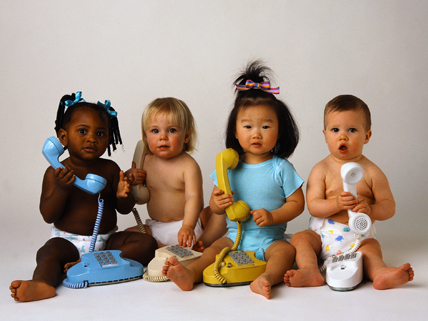My five-year-old daughter started school this week and she said, or rather did not say, something which left me amazed. I asked Sammy who she played with on her first day of school and she happily replied, “Jordan!” When I asked her to tell me all about her new friend, she rattled off a long list of descriptives. “Well, she’s fast at running and likes to color like me.” I later found out that Jordan is a black girl, but it never occurred to Sammy to point out her classmate’s skin color as a distinguishing marker of her identity. She simply didn’t see color. She didn’t resort to using race or color to narrow the field down for me because she isn’t programmed, or rather polluted, like most adults to immediately make a note of someone’s pigmentation.
I’ll admit that had I been asked this very same question, I might have included my friend’s complexion in the list of descriptives. Not as an expression of tacit prejudice, but rather as a way of quickly and easily conveying someone’s identity. Sammy’s color-blind response left me wondering how often adults rely on ethnicity or skin color as our first means of describing one another. And sometimes it is the only means. That was the case in Trayvon Martin’s murder; his attacker identified him not as a tall man or a teenager, but as a black male and therefore a threat.
I myself have felt the indignation of being reduced to my color. As a brown-skinned Muslim living in a post-9/11 world, I have shuffled through “extra security measures” at airports, felt strangers’ gaze linger in my direction a little too long and sometimes experienced open prejudice simply because I am brown. It is remarkably easy, and equally dehumanizing, to lose sight of what truly makes a person and instead zero in on arbitrary characteristics like the pigmentation of their skin.
Being color-blind is a universal quality among children. While interning at an elementary school, I spent a few months with a classroom full of first-graders. When each student was asked to create his or her family tree using photographs, a black girl who had been adopted by white parents, proudly presented hers to the class. Not one of the 23 kids in the class pointed out that this student’s mother and father were of a different skin color. She had large pictures of her family pasted on her board, and none of the children noticed that there was a gap in the equation. She did not explain that she was adopted—she may not even have known herself—but it didn’t matter because as far as these children were concerned, no explanation was needed.
When Sammy and I are in the car, I’ll often pop in a song with a particular line we both love. “Allah looks not at how you look, but what is in your heart.” I sing this line to my daughter and we talk about the importance in Islam of seeing a person’s deeds and words instead of their weight, skin color and all the rest. I do not need to teach Sammy about not judging others based on the superficial because as an uncorrupted child, this comes naturally to her. I just hope this innocence never leaves her because it is as shameful that we do note color and race, as it is beautiful that our children don’t.
[separator type=”thin”]
Samar Ahmed won no Nobel Peace Prize but is a single mother and teacher paving her unique path in life residing in Toronto
(Photo Source: thepsychologicalhook.com)



